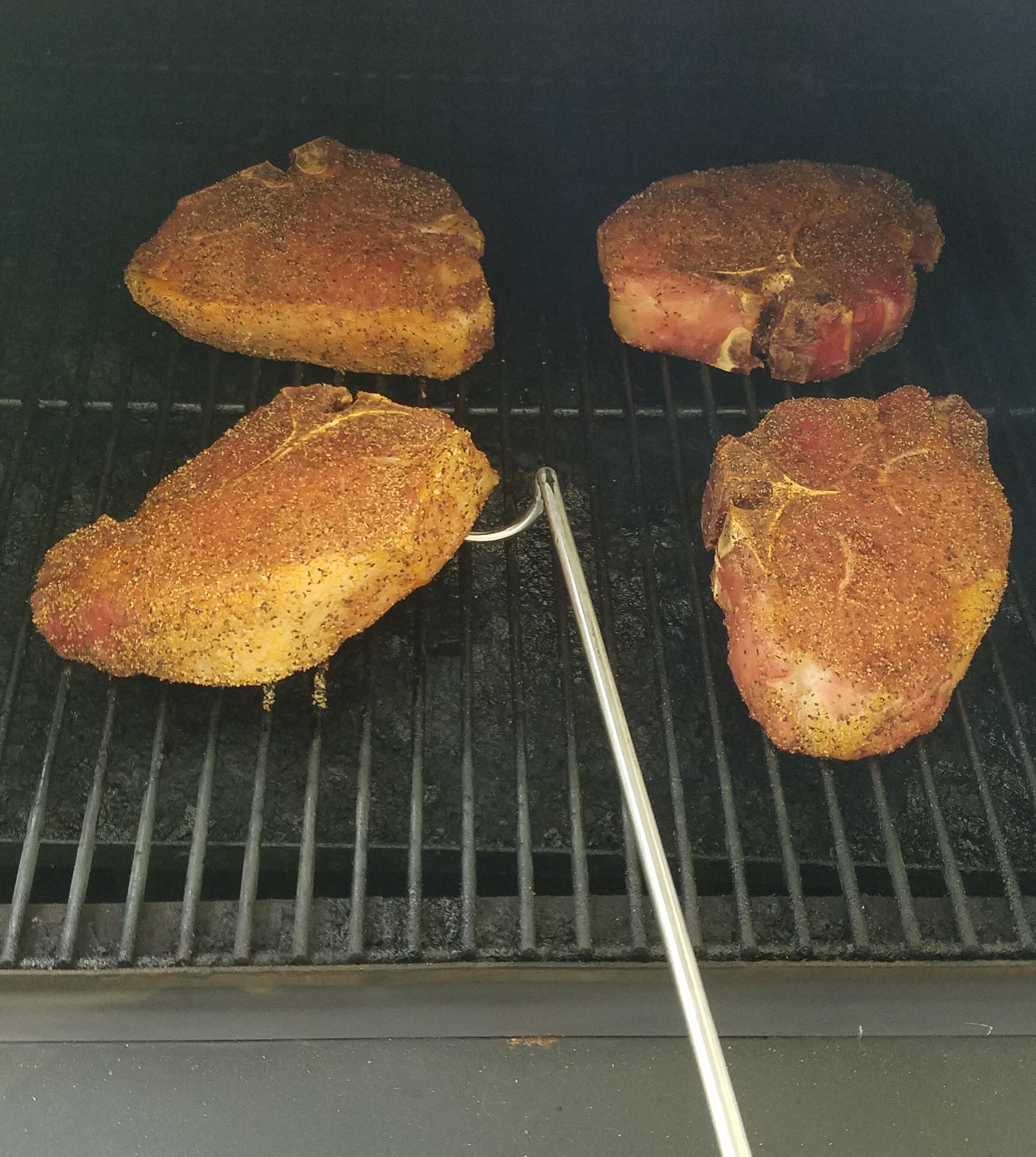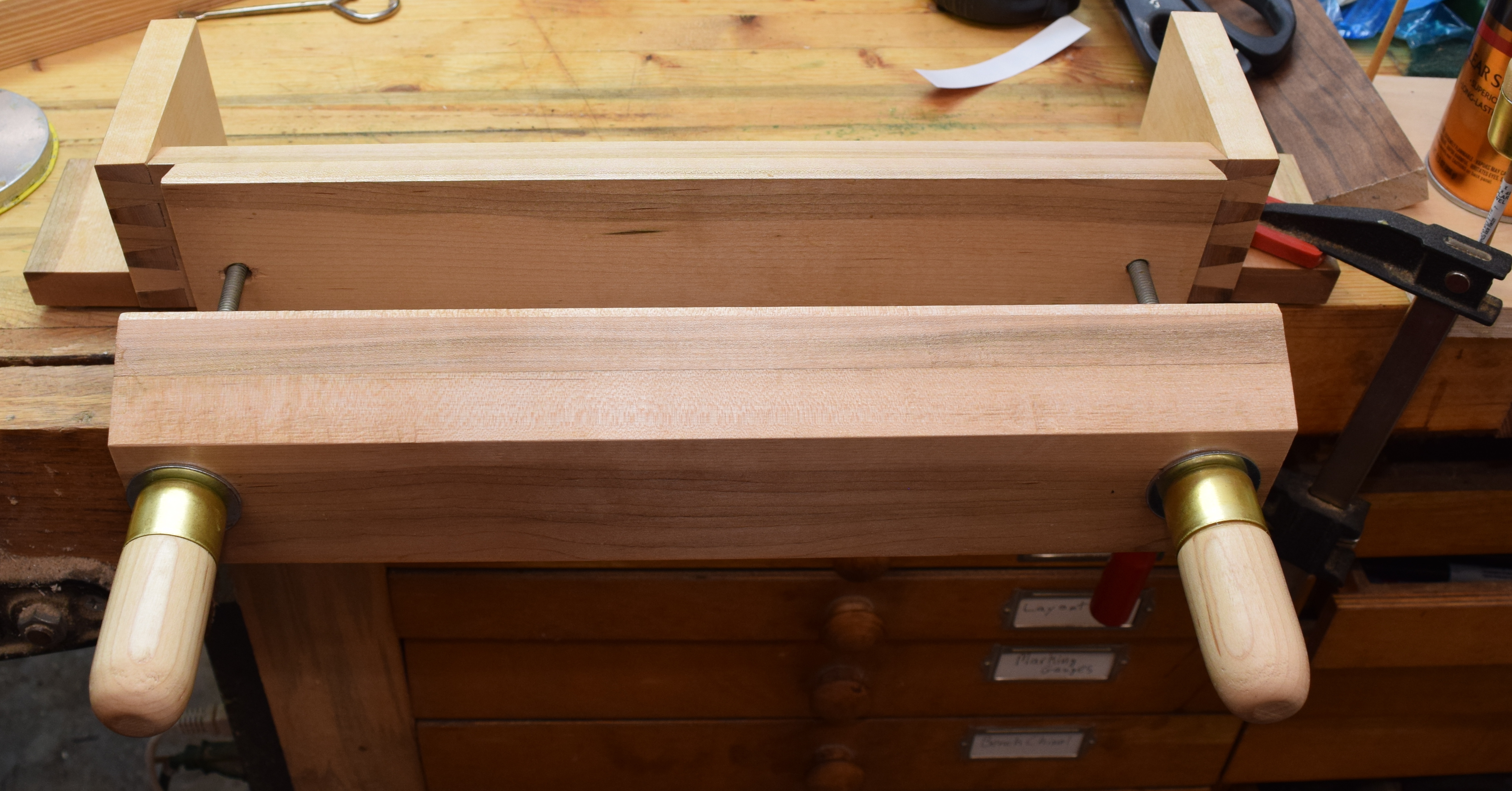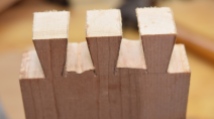I am about 6 months late on this wedding gift, but better late than never! I wouldn’t normally add yet another post to the internet about making a butcher block cutting board, but this one had a few noteworthy mistakes I thought I would share along with a juice groove, which is a novel endeavor for me. Isn’t it funny how cutting boards call for half the clamps in your shop?

Lesson 1: Melamine Does Not Resist Glue
I had some spare plywood with melamine face that I thought would make a good glue up surface. It is flat and strong and the wood glue will not stick to it. Imagine my surprise when the board wouldn’t come off. I employed numerous wedges and was eventually able to break it free. I don’t know what they use to hold the face down, but my glue is better. I guess you need to wax it to prevent adhesion. I will go back to using wax paper like I did before.

Lesson 2: Helical Cutters Work Wonders
On a more positive note after scraping off the glue ridges I tried to send the board through the planer. Normally using a planer on end grain like this yields poor results. I had it shoot the board out of my last planer in pieces. My new helical cutter works wonders, the top looks gorgeous now.

Lesson 3: Watch Your Glue Up
I thought I was being really careful with this build. I measured and planned everything out so there was a 1:2:3 pattern to the size of the blocks in the board. That worked out, but I failed to flip the last piece properly when gluing. The pattern repeats on that last row.

Lesson 4: Juice Groove
I cut the last row off and re-sanded the end. Despite some minor road bumps this was going well. Time to press my luck even further and add a whole new feature! There are a lot of ways of doing a juice groove. Setting up stop blocks on the router table seemed to be quick, safe, and reliable.
I used that row that was cut off to experiment. You have to use a lot of pressure up against the fence or else the bit will wonder. Ok, now on to the real thing.

It was quick, it was safe, and it is certainly a groove. Not 100% reliable though. It looks straight everywhere, but overshoot exists at some corners. I don’t know if the stops shifted, or if my measurements were just off. Maybe I won’t be using this technique any more.
The Finish
Over all I would call the board a success. It came out slightly smaller than intended and the juice groove has a little wonder to it. Otherwise the oiling process made me very happy I with my efforts.

Before Oil 
After Oil
I kept pooling mineral oil on the top surface and let it soak in. That juice groove kept the oil from spilling over the edges. Eventually it saturated through all the way to the bottom side.







































 I wanted to try one of these tools, and my localish woodcraft had these new kits on sale. Why not make one for myself and the dads in my life? I picked up some thick maple dowel to make these handles. I was building the handles for my mom’s
I wanted to try one of these tools, and my localish woodcraft had these new kits on sale. Why not make one for myself and the dads in my life? I picked up some thick maple dowel to make these handles. I was building the handles for my mom’s 


































































